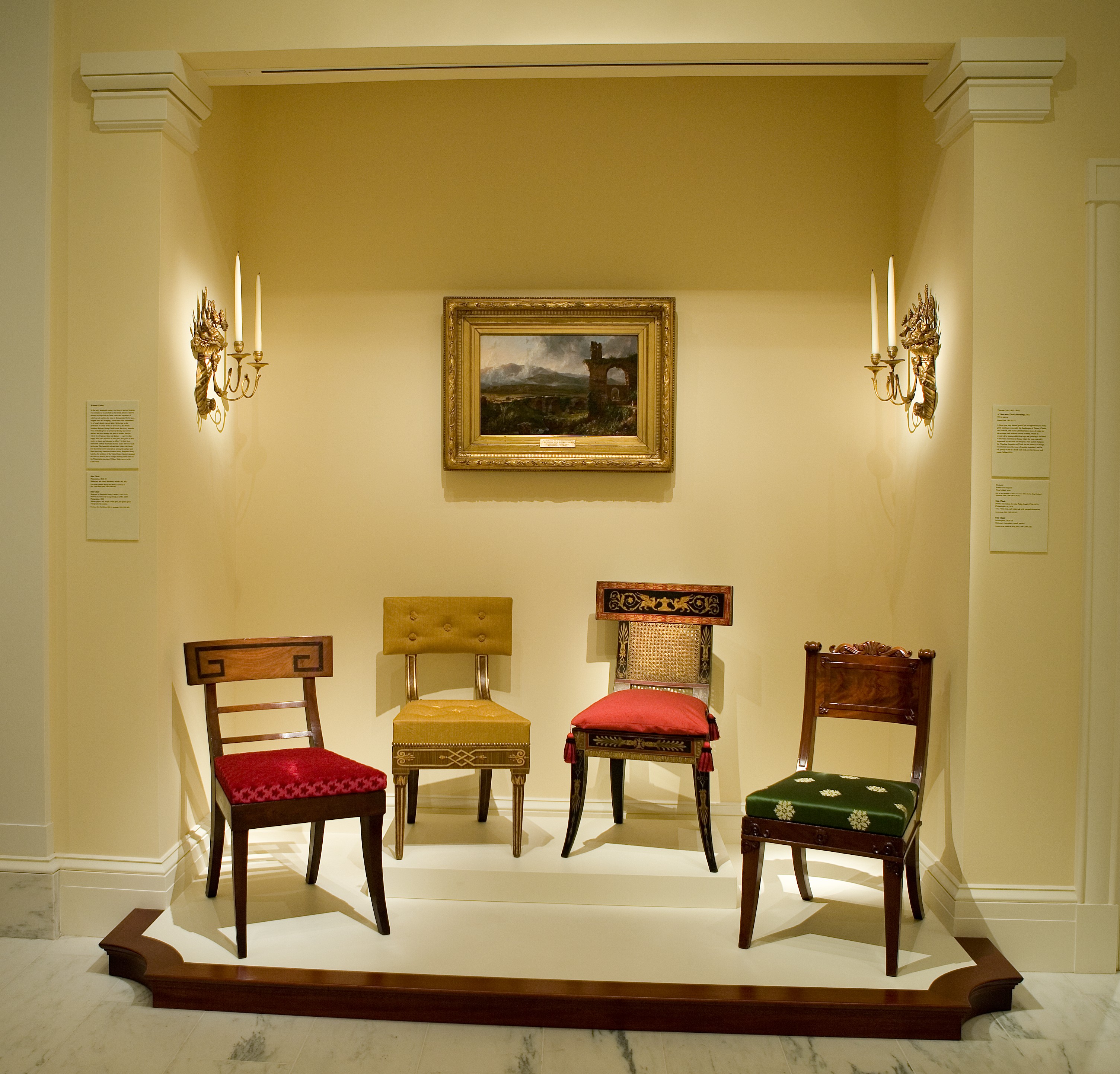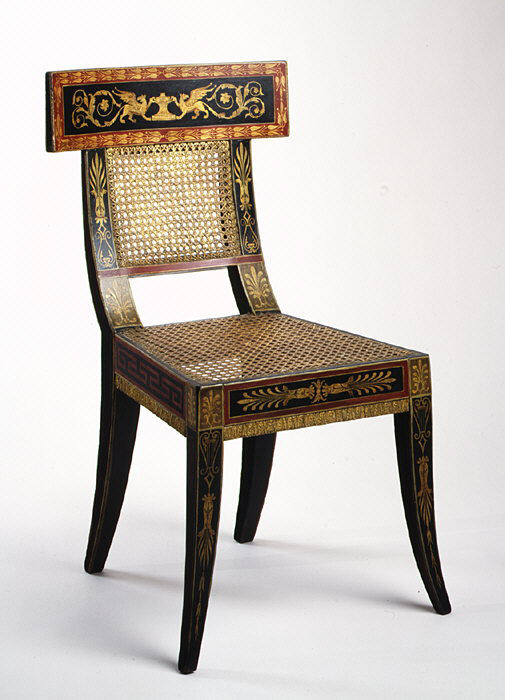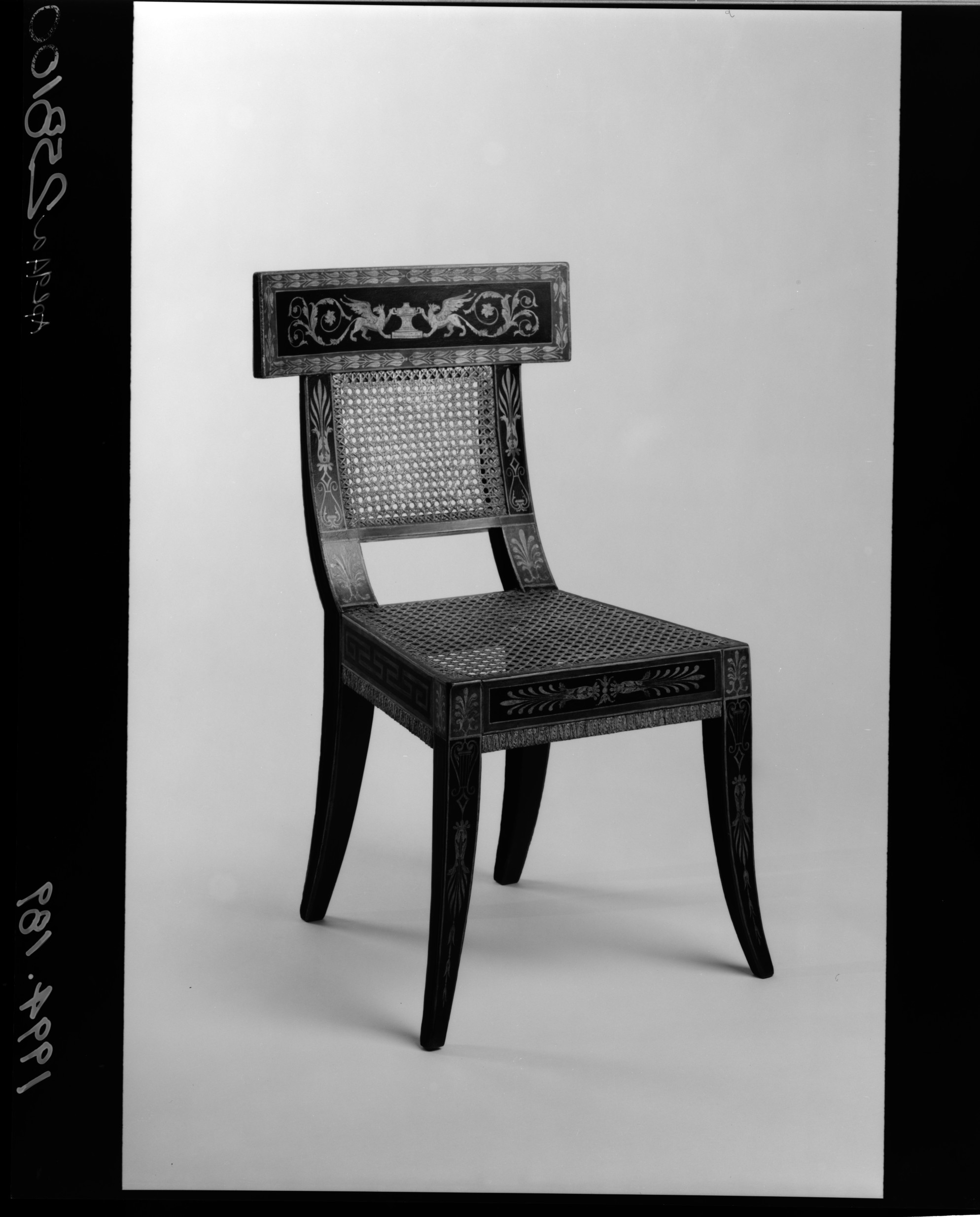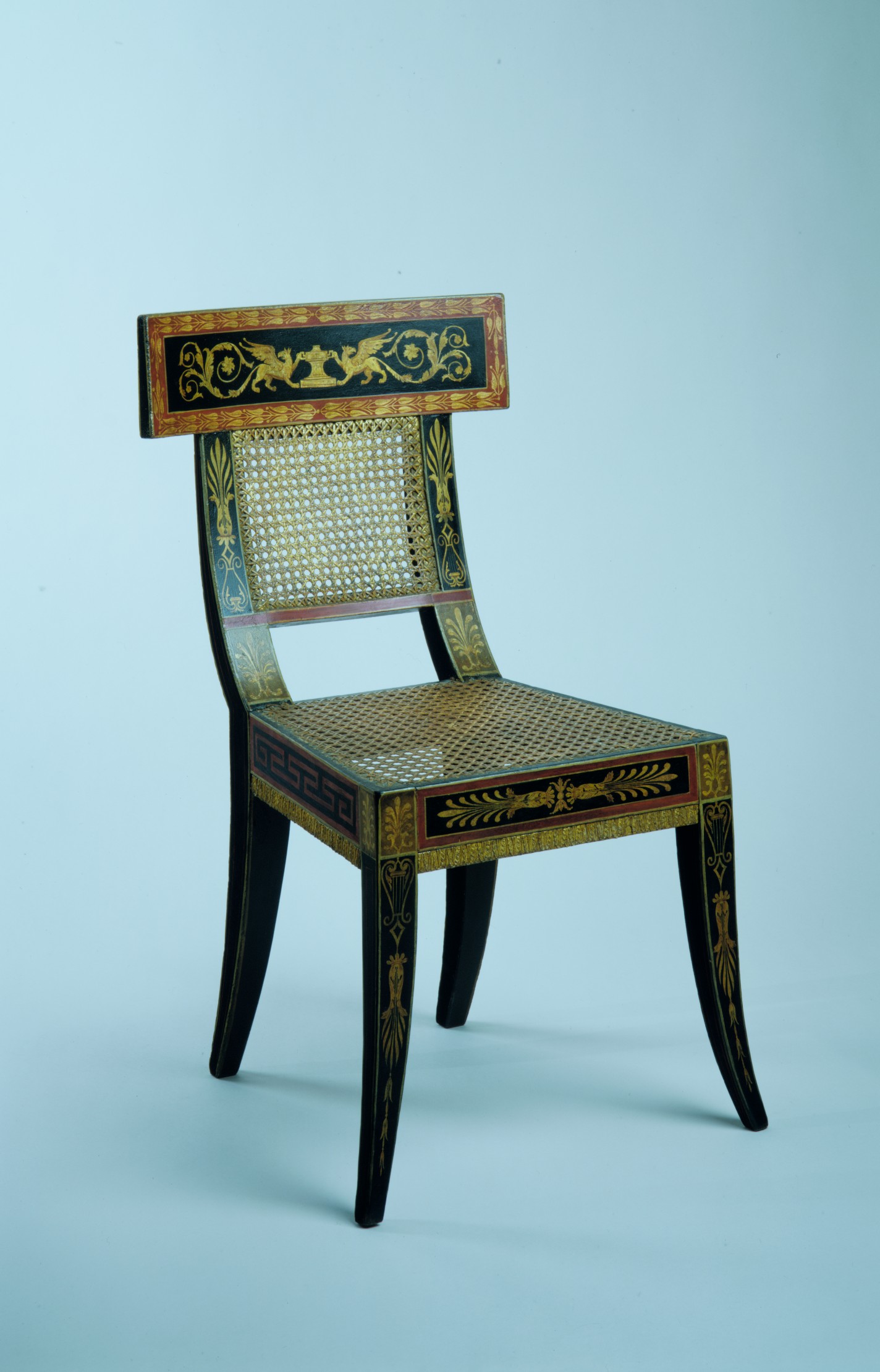Side Chair
Designer Benjamin Henry Latrobe American, born England
John Aitken American
Decorator George Bridport American
Not on view
In the early nineteenth century, no form of ancient furniture was imitated as successfully as the Greek klismos. Known through its depiction on Greek vases and fragments of relief-carved marbles, the chair is distinguished by its spare, elegant lines and sweeping, curved rear stiles surmounted by a broad, deeply curved tablet. Reflecting on the perfection of Greek works of art in 1812, the British furniture designer George Smith wrote that every attention “was evidently given to produce a flowing and correct outline; and so to arrange the parts in masses, that the whole should appear clear and distinct . . . and it is this happy relief, this rejection of little parts, that gives their works so chaste and pleasing an effect.” At their best, nineteenth century American klismos chairs strive for such perfection. This beautiful red-and-black chair with Greek key decoration on the seat rail is among the earliest and finest surviving American klismos chairs. Benjamin Henry Latrobe, the architect of the United States Capitol, designed the chair in 1808 as part of a large drawing room suite for the Philadelphia merchant William Waln, active in the China trade.
Due to rights restrictions, this image cannot be enlarged, viewed at full screen, or downloaded.
This artwork is meant to be viewed from right to left. Scroll left to view more.






